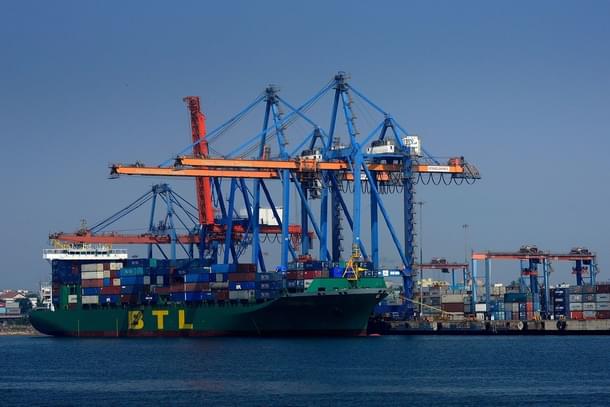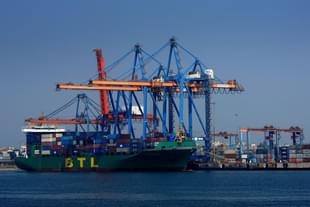Infrastructure
Indian Ports: Significant Growth In PPP Investments Through New Tariff Guidelines And Policy Reforms
Arun Kumar Das
Jan 08, 2024, 10:08 AM | Updated 10:07 AM IST
Save & read from anywhere!
Bookmark stories for easy access on any device or the Swarajya app.


Aiming at providing greater flexibility to investors along with new tariff guidelines a series of policy-related reforms are being undertaken to attract the PPP mode of investment in Indian ports.
According to the Ministry of Ports, Shipping and Waterways, the PPP mode of investment in Indian ports has made remarkable progress in the last 25 years. Over the last decade, the port sector has witnessed remarkable growth in terms of PPP investments. Over 35 projects of over Rs 40,000 crore have been awarded in the last decade.
The ministry maintains that already 56.5 per cent of cargo in major ports is handled through PPP investments and this number will continue to increase with the push on making major ports adopt a close to 100 per cent landlord model, like JNPA has already achieved.
For the near future, the ministry has planned to target more than 85 per cent of the cargo to be handled by PPP players under MIV 2030.
Maritime India Vision 2030 (MIV 2030), is a blueprint to ensure coordinated and accelerated growth of India's maritime sector in the next decade.
To achieve this target, the ministry has identified 81 PPP projects worth Rs 42,400 crore from FY2021-22 to FY2024-25 under National Monetization Pipeline (NMP) out of which 14 projects worth Rs 10,750 crore have been awarded.
For FY2022-23, 24 projects worth Rs 12,551 crore were identified under NMP, of which 13 projects of INR 8,687 crore have already been approved and some are under the bidding process.
Similarly, for FY2023-24, 20 projects FY2023-24 identified under NMP worth Rs 6761 crore, of which four projects of Rs 1581 crore have already been approved and are under bidding process.
Some of the high-value projects are focusing on the outer harbour at Tuticorin Port worth Rs 7,055 crore, the multi-cargo berth at Deendayal Port worth Rs 1,719 crore, and berth 7 and 8 at Syama Prasad Mukherjee Port worth Rs 865 crore.
According to the ministry, these initiatives will not only generate revenue but also play a crucial role in the development, modernisation, and expansion of maritime infrastructure, making India more competitive in the global maritime sector.
The ministry has touched new heights with several policy interventions. As the ministry believes, the PPP mode is a very big contributing factor in bringing in the new technologies resulting in more efficient port operations like optimised evacuation capabilities and yard management, automation in the process, reduced turn-around time, better cargo handling and rationalising the logistic cost, which all contributes to the unlocking of port capacity thereby making the major ports globally competitive.
After the enactment of the Major Port Authorities (MPA) Act, 2021 in February 2021, the major port trusts were converted into major port authorities with more freedom in decision-making through their boards.
The ministry maintains that major policy-related reforms for strengthening and encouraging PPP in the port sector were undertaken which include the revised model concession agreement (MCA), 2021 to provide greater flexibility to investors.
Besides, new tariff guidelines, 2021 to set tariffs by PPP concessionaires as per market dynamics - providing greater autonomy and guidelines for dealing with stressed public-private partnership (PPP) projects at major ports to remove inefficiency and probability of insolvency - were also being undertaken.
Other initiatives include conciliation and settlement committees for major ports to settle decade-long commercial disputes.





